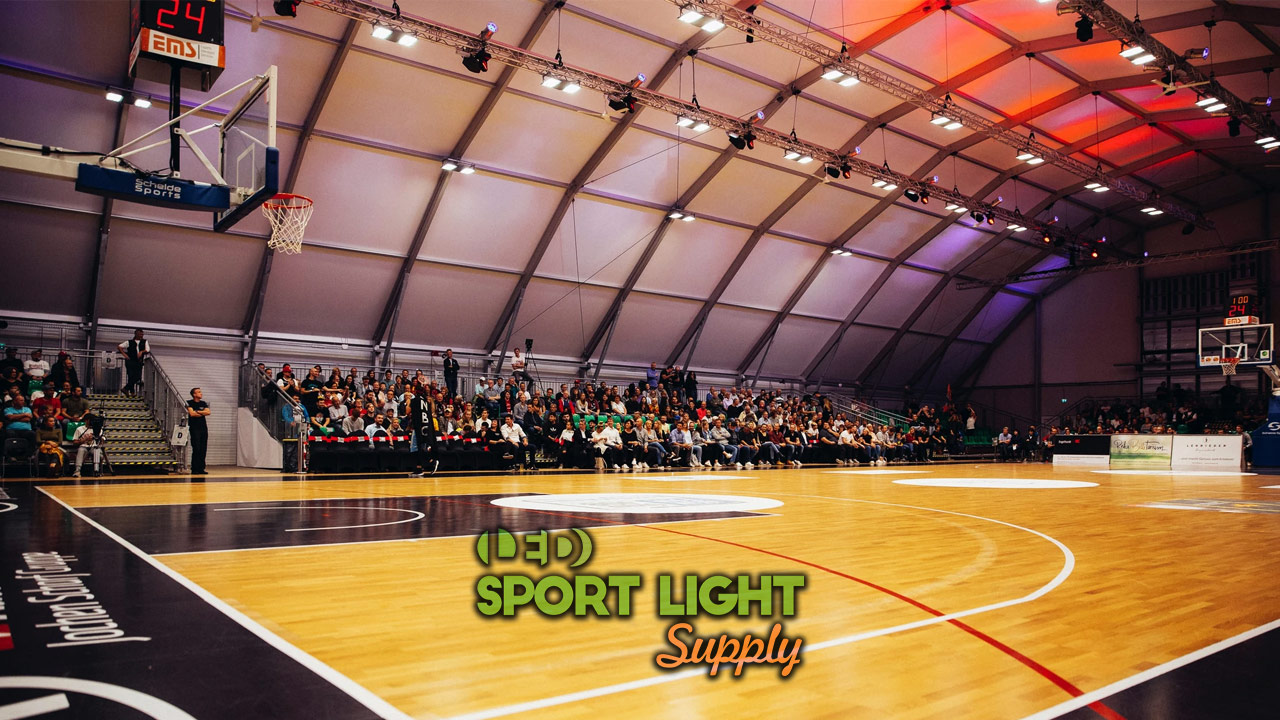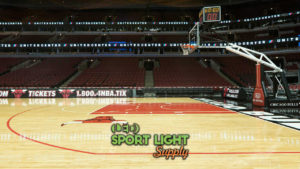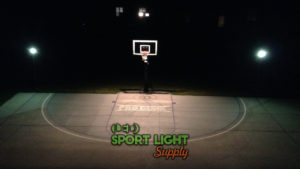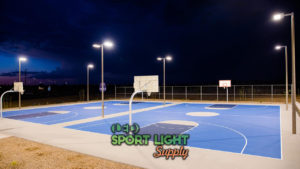A comprehensive guide on the basketball court lighting standards must touch upon three central topics. Namely, the concepts at the base of each requirement and the technical issues. And of course, how to prevent the latter ones.
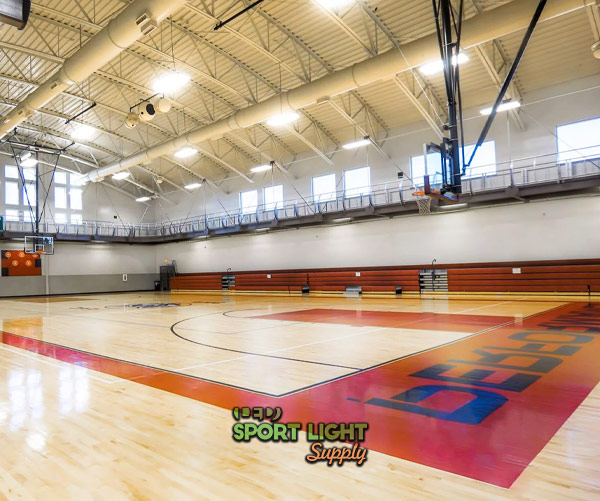 Players can play basketball both in an indoor or outdoor stadium. So, the arena design has a major impact on the lighting standard that applies to a specific basketball court. For clarity, think of the decisive shot from the free throw lane at the very end of a game.
Players can play basketball both in an indoor or outdoor stadium. So, the arena design has a major impact on the lighting standard that applies to a specific basketball court. For clarity, think of the decisive shot from the free throw lane at the very end of a game.
Besides the level of play, you should be aware that different sports facilities may have structural restrictions. Dealing with a professional company is thus highly recommended. After all, careful layout planning can prevent both errors and nuisances that make your stadium look shabby.
Here is a brief explanation of the main reasons for being mindful and maintaining perfect lighting conditions at all times.
Importance of fulfilling the basketball court lighting standard
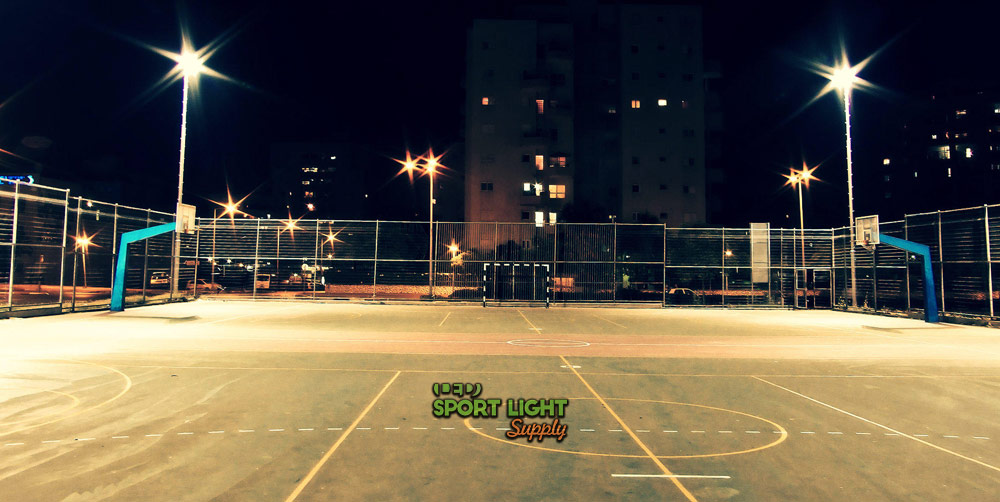
Playing basketball requires hand-eye and foot-eye coordination. But the players are not the only ones in that need perfect lighting.
Referees must manage the game as well as the spectators. For example, an official may stop the clock either for a violation or a foul. Referees use many signals like thumbs up or a cupped hand to give directions. So, even light distribution is essential for everyone to understand what is happening.
Outside the lines of the arena, you find spectators who paid tickets to see the match or special event. So, they expect to enjoy their free time. Especially during an NBA basketball game.
Comfortable vision can prevent injuries. But it also ensures the best investment return over time. For one thing, optimal lighting conditions are necessary for broadcasting games live.
Broadcasters use high-end video cameras that capture crisp images and convert them into digital data. But to work correctly, these machines demand the use of high-quality LED lights. This is why the broadcasting standard defines a set of rules for you to follow.
Basketball Court Lighting Standards
1. Lux and brightness requirement
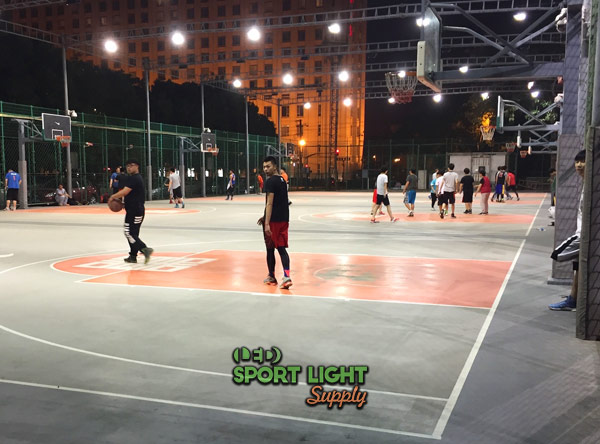 Without a doubt, light intensity the chief value that concerns a basketball stadium owner. If you have ever shopped for lights, you should know about lumens. The Lumen is the unit of measure for brightness. In detail, each luminous source emits a fixed amount of lumens.
Without a doubt, light intensity the chief value that concerns a basketball stadium owner. If you have ever shopped for lights, you should know about lumens. The Lumen is the unit of measure for brightness. In detail, each luminous source emits a fixed amount of lumens.
The lumen output alone is not sufficient to satisfy the professional standard. In fact, height and positioning influence the overall brightness in the arena. This is why we need to use the Lux. Usually, the basketball lighting standard refers to three lighting classes. Each class is specific for a precise level of play.
The first class includes international competitions and televised NBA matches. Instead, the second class covers national basketball games and tournaments. Finally, the third class contains the minimal requirement values for high school matches and training.
The horizontal illuminance values per class are:
- At least 1,000 lux for class I. The highest the level of competition, the higher the lux value, up to 2,500 lux
- Between 700 and 999 lux for class II
- 250-699 lux for class III and recreational activities
2. Lighting uniformity standard
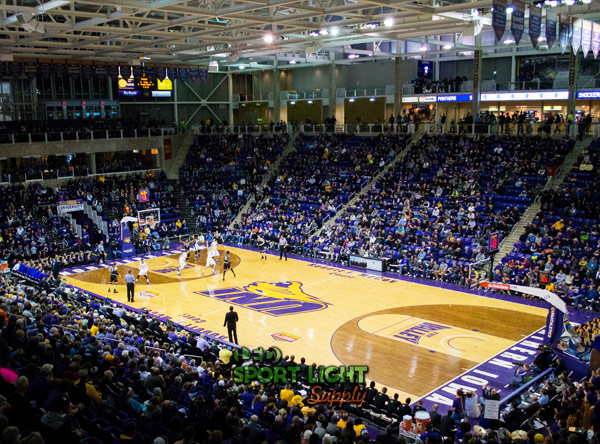 The fastest way to measure the lux values on the basketball court is to use a lux meter. But then, you must make sure that the light distribution is equal in any part of the basketball stadium.
The fastest way to measure the lux values on the basketball court is to use a lux meter. But then, you must make sure that the light distribution is equal in any part of the basketball stadium.
The requirement in question for both outdoor and indoor courts is the lighting uniformity standard. At the professional level, the basketball stadium must provide adequate horizontal and vertical illumination.
To calculate uniformity, you need to divide the basketball arena into a grid. Then, you take all the lux readings in every square and divide it by the maximum value to get U1. And by the average reading to get U2. Each class has its own U1 and U2 values for the basketball stadium owner to maintain.
Usually, Class I games require at least 0.8 (U1 and U2) for horizontal and vertical illumination. At the lower levels, a horizontal uniformity (U1 of 0.6 and U2 of 0.7) suffices. Keep a U1 of 0.5 and a U2 of 0.6 for safety reasons during any Class III events.
3. CRI and TLCI
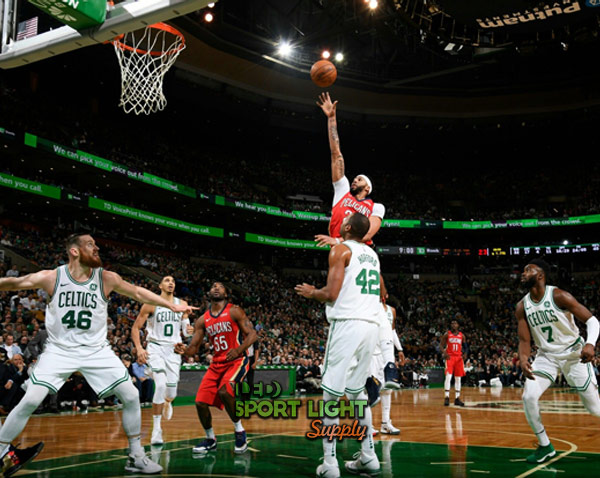 When hosting broadcasters in your basketball stadium, you cannot overlook crucial factors such as the color rendering index. In brief, each light source emits a luminous flux that resembles sunlight. Yet, these rays are not like sun rays. Nor they ensure a realistic color rendering of the illuminated objects.
When hosting broadcasters in your basketball stadium, you cannot overlook crucial factors such as the color rendering index. In brief, each light source emits a luminous flux that resembles sunlight. Yet, these rays are not like sun rays. Nor they ensure a realistic color rendering of the illuminated objects.
For broadcasting purposes, color rendering is vital. So much so that, in this professional sector, the camera crew must consider the TLCI value of the lights. That is, how good or bad the light sources render colors for the video camera sensors.
In a stadium, the video camera equipment is usually limited. So, light quality affects the recording. Especially during live streamings and TV broadcasts.
On each fixture package, you find the color rendering index (CRI). For the best results, opt for LED lights with at least a CRI value higher than 85 Ra. If you host televised basketball games, only choose lights with a TLCI higher than 90.
4. Anti-glare
Both CRI and TLCI are critical for human eyes and broadcasting needs. But often, sports lights are so bright that they can blind the players.
Players who dribble a basketball must look around them all the time. Otherwise, they could miss a chance for a spectacular alley-oop. Or an opportunity for a sensational splash while the defense is off. The point is, glare should never be a problem during a game.
To control glare, the light must possess an anti-glare feature. In any case, a glare rating higher than 50 is unacceptable. A lighting designer usually considers the positioning and intensity of the light sources. For every project, the design includes calculations to prevent glare.
As you can imagine, glare ratings change depending on people’s position and direction of the gaze. So, experts use professional software to achieve satisfying results.
5. Color temperature
When buying a light, color temperature is a useful spec that prevents light color selection mistakes. Without it, you could purchase a light source and be disappointed when you install it. Mainly because the light is too bluish or too yellowish.
Basketball associations may not specify a standard for color temperature. Sometimes, they suggest a warm light. But the players themselves could focus more under a cool white light. So, you should consider different color temperatures over the years and see which one works best.
On the light packaging, you might find descriptions or labels. But the names may change: some brands use the term “warm white” while others use “neutral white.” So, it is better to look at the Kelvin value in the specs to understand the color temperature.
Numbers higher than 3,000 K determine a cool white light. The higher the number, the bluish the light. Instead, lower numbers describe a warm glow with yellowish hues. Under the 1,800 K mark, the light is too yellow for sports activities.
6. Other standards
Indoor basketball stadiums could require height and distance standards. Normally, a height of at least 23 feet (7 meters) is necessary. The lights illuminating the paint from the sides should be 23 feet (7 meters) distance from the fixtures in the middle. If more fixtures illuminate the neutral zones, then a distance of 13 feet (4 meters) should separate them.
Over time, the light output depreciates. So, keep an eye on any variation. In detail, a maintenance factor of 80% is the minimum value before requesting a new professional assessment.
If you choose LED lights, you will probably end up requesting a new lighting design when the lights die. Thanks to their superior life span, LED lights are the most recommendable light source. If you do not install LED lights, an additional security or safety standard may apply.
Please, refer to your basketball association for any additional lighting requirements.
Outdoor basketball court lighting issues
1. Light pollution requirement
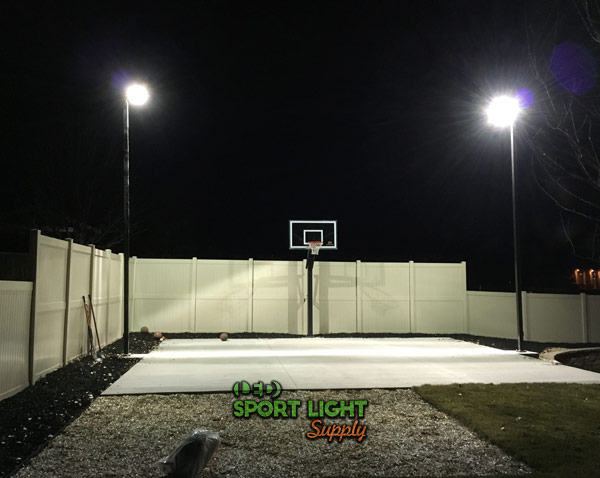 An outdoor basketball stadium should consider the amount of sky glow. Diffuse illuminance affects the living quality of the area. Both for humans and animals. Of course, you can add specific light shielding to reduce light trespass. But that may not be enough.
An outdoor basketball stadium should consider the amount of sky glow. Diffuse illuminance affects the living quality of the area. Both for humans and animals. Of course, you can add specific light shielding to reduce light trespass. But that may not be enough.
A professional design takes into account the basketball arena location as well. In fact, light pollution can expose heavily trafficked areas to a severe hazard. Excessive artificial light could cause car accidents or annoy the neighbors.
The light should only fall on the basketball court. So, it is better to reduce any clutter. Instead, the lighting layout should include an adequate, efficient grouping system of light sources.
Too much brightness can increase energy consumption. Plus, it could help criminals to steal from spectators in the stands. Or in nearby parking lots. Either way, you should consult an expert for a better lighting design.
2. Waterproof standard of outdoor basketball court lights
An outdoor basketball arena must face rain, snow, sand, and dirt. Generally speaking, you could consider bird droppings and dust as well. But luckily, you can avoid these issues by choosing the right fixtures.
To be precise, you need to read the Ingress Protection (IP) rating in the specs sheet. The numbers after the letters I and P help you decide which light is better for your outdoor stadium. Mainly because these numbers inform you about weatherproof.
The IP rating gauges the light suitability outdoors. More precisely, their resistance to external forces like humidity and solid particles. Each number after the letters IP represents two separate types of protection. The first number relates to isolation from the intrusion of dust and solid objects, no matter how tiny. Instead, the second one expresses the resistance to moisture and water.
The best sports lights have an IP rating of 67 and 68. In both types, the 6 refers to dust tightness and sealed cases. The 7 and 8 indicate protection against immersion and direct water jets for a short period. The higher the number, the better.
3. Lightning protection
Electrical discharge can burn your fixtures and cause heavy damage to people and equipment. Of course, if you install high mast lighting, you need a lightning protection system.
Lightning strikes are not so uncommon as the general public thinks. A typical lightning strike contains more than 100 million volts of electricity. With all that power, it is the most underrated weather hazard of all.
The consequences of a lightning strike can cause:
- injuries
- thousands of dollars in property damage
- fried electronics
- a fire that destroys the stands or nearby buildings
A surge protection system can protect some of the lights and electronics. But you still need a lightning protection system. That is, a grounding network designed to protect the high masts or basketball stadium against lightning’s harmful electricity.
In practice, you need to buy and install lightning rods and some grounding cables. You can find several types of air terminal or strike termination devices. In detail, you connect the rod to a bonding system that connects to a grounding system. The main idea is to intercept the strike and take it down to the ground where no damage is done to the players or lights.
4. Lighting control system
In between quarters, a lighting control system can help you regulate the lights. During the breaks, you could dim the fixtures slightly. Or use different light points for a halftime show.
A basketball court can use a lighting control system to power up several light groups. Thanks to innovative solutions, you can control the lights remotely with your smartphone. Or set a touchscreen to easily access and customize separate stadium areas at once.
Behind the wall, you can install a panel to mix centralized and distributed control under one system. On top of that, you can connect it to the outdoor sports field for training. The system further expands with the introduction of new lighting solutions like LED tubes or spotlights.
New luminaires can offer third-party integration to communicate with other systems for building management. For example, audio and video devices or the AC system. You can create a more welcoming experience for the spectators, or light effects play out before the game starts.
You can request a custom lighting control system that suits your basketball arena by contacting a professional company.
Indoor basketball court lighting issues
1. Heat dissipation
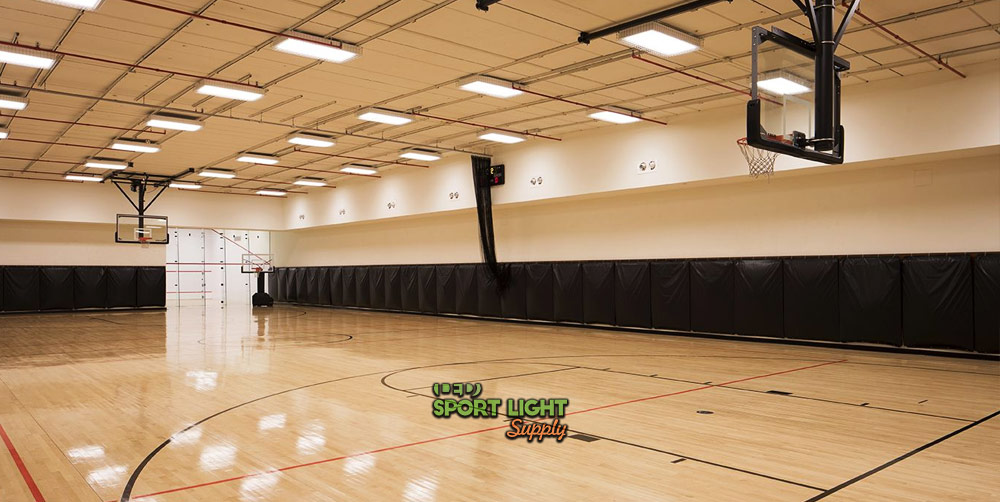
Traditional light sources like MH and HPS generate a lot of heat. As the heat gets stuck in the ceiling, the fixtures’ life span will shorten. So, you need to check the air exchange constantly. Or, more simply, to install LED light with an effective heat dissipation system.
LED lights generate less heat. Plus, they usually contain a high-quality heatsink that keeps the operating temperature at an acceptable level. Without LED lights, more bulbs will stop working during horrendous heat waves.
An AC system will not be enough to help you against the heat transfer. Mainly because the cool air moves down to the ground while the hot air remains at the top of the room. Of course, this natural process can also interfere with broadcasting equipment. So, an AC system is necessary but not sufficient to prevent your lights from overheating.
A successful lighting design considers the temperature difference. Especially in basketball stadiums with a low ceiling. Heat always moves from a higher temperature to a lower one. So, an expert designer might provide you with a more advanced heat dissipation system.
2. Direct or indirect lighting
The way you illuminate the basketball stadium gives out a specific type of ambient. If you want to give the arena some proper flare, you might want to use indirect lighting.
Budget-wise, indirect lighting is more expensive. But on the bright side, it offers a stunning lighting uniformity. To specify, you achieve indirect lighting by pointing the lights to the wall. Then, the light bounces back to the basketball court and the stands.
Depending on the available space, you can mount specific fixtures for indirect lighting. You can also bury the lights in recessed portions of the wall for more appealing aesthetics.
On the other hand, direct lighting is the standard lighting solution. The lights point to the playing surface. As briefly mentioned, this choice can cause glare and blind spectators and referees. But it is also the most cost-effective arrangement.
3. Spacing between the basketball court lighting
Most indoor basketball stadiums use LED high-bay lights. Also known as UFO lights, you can install these fixtures right above the basketball court.
However, you will have to keep the appropriate spacing between the lights. This applies to both the distance from the ground and between the lights themselves.
The height is the most crucial factor in deciding both distances. In fact, the taller the ceiling, the higher the distance between each row of high bay lights.
On average, ceilings higher than 30 feet should have each row at 15 or more feet of distance from each other. But in the end, you need to consider the illuminance values.
When the light sources are not bright enough, you have to hang them low. This change affects the spacing and should be calculated with professional software like DIALux.

